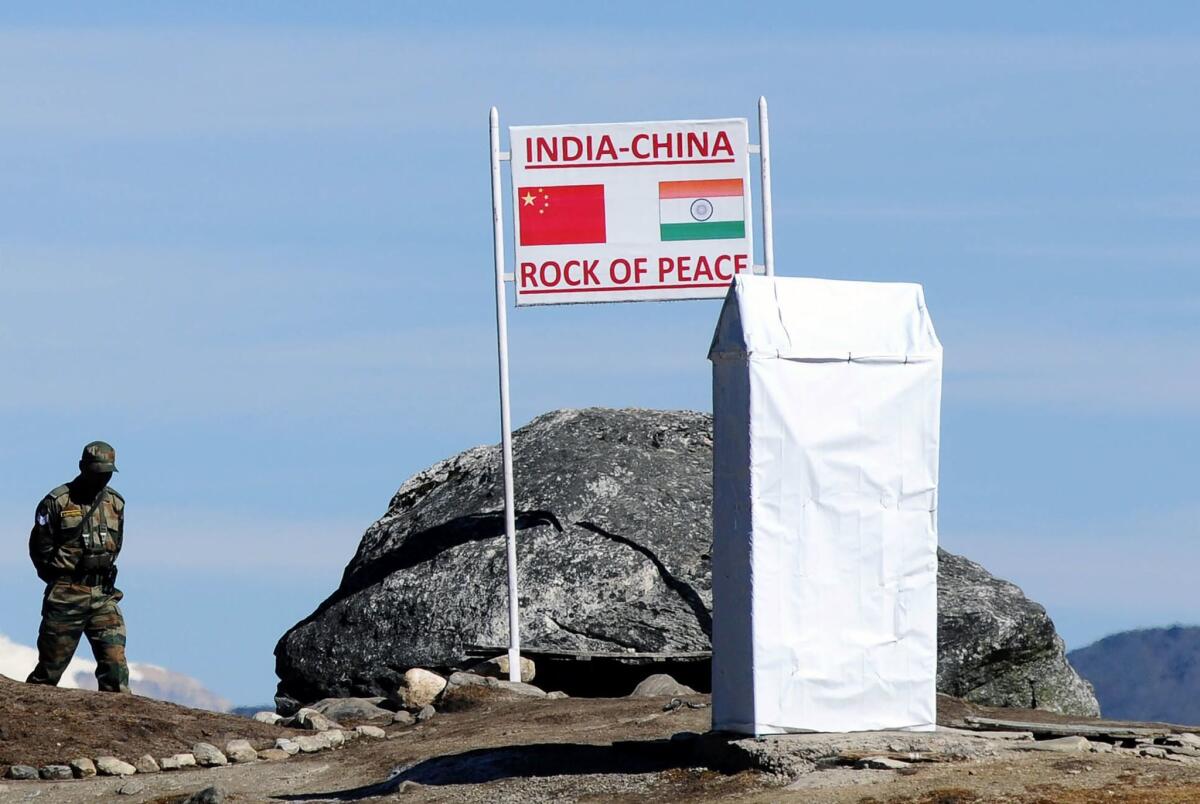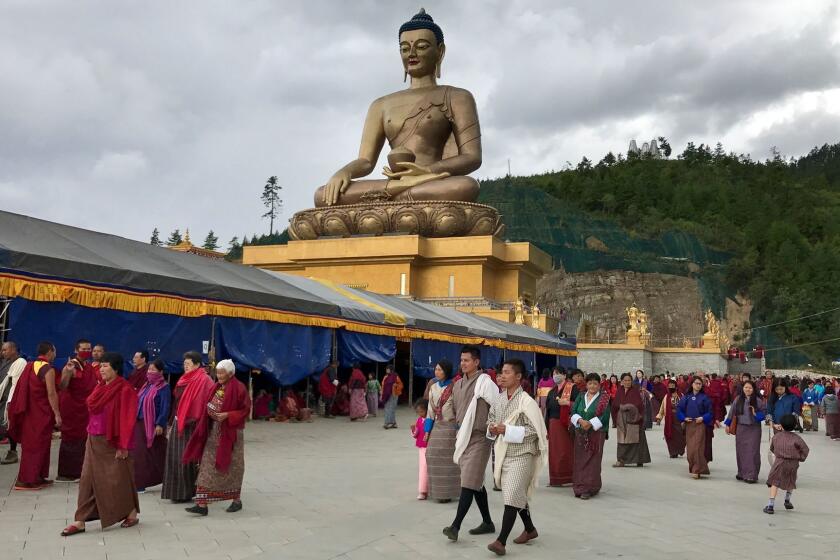China, India agree to disengage forces after deadly Himalayan clash

- Share via
BEIJING — Chinese and Indian military commanders have agreed to disengage their forces in a disputed area of the Himalayas following a clash that left at least 20 soldiers dead, both countries said Tuesday.
The commanders reached the agreement Monday in their first meeting since the June 15 confrontation, the countries said.
The skirmish in the Galwan Valley, part of the disputed Ladakh region along the Himalayan frontier, was the deadliest between the two countries in 45 years.
Chinese foreign ministry spokesperson Zhao Lijian said “the two sides had a frank and in-depth exchange of views on the prominent issues in the current border control and agreed to take necessary measures to cool down the situation.”
The Indian army said in a statement that “commander-level talks ... were held at Moldo in [a] cordial, positive and constructive atmosphere. There was mutual consensus to disengage.”
Zhao denied speculation by an Indian government minister that 40 Chinese troops had died in the June 15 clash.
“I can tell you responsibly that it is false information,” he said at a daily briefing.
Tucked like a jewel into the mighty Himalayas, the mountain kingdom of Bhutan has rarely commanded the world’s gaze, its hillside monasteries and emerald valleys long known only to select travelers seeking adventure or enlightenment.
India has said that 20 of its soldiers died. China has not released any information on casualties on its side.
Soldiers brawled with clubs, rocks and their fists in the thin air at 14,000 feet above sea level, but no shots were fired, Indian officials have said. The soldiers carry firearms but are not allowed to use them under a previous agreement in the border dispute.
Indian security officials said previously the fatalities were caused by severe injuries and exposure to subfreezing temperatures.
The valley falls within a remote stretch of the 2,100-mile Line of Actual Control — the border established following a war between India and China in 1962 that resulted in an uneasy truce.
More to Read
Sign up for Essential California
The most important California stories and recommendations in your inbox every morning.
You may occasionally receive promotional content from the Los Angeles Times.














